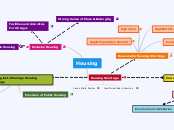Newfoundland and Canada West
Compare and Contrast 1830-1860
Important People
John A. MacDonald, George E. Cartier, and George Brown, were trying to convince everyone that the rebels are not good so we need to give the French Canadians some space for their language, and culture.
Canada West had many more important people than Newfoundland but they both did similar things.
Philip F. Little, Philip was the leader of liberal party in the 1850s.
Both of these places had important people and they did important things.
economy
1850’s with what was once a place full of isolated settlements turned into a lively network of farms,cities, and towns. After more railroads were being manufactured, lots of materials were being transported to rural communities and large cities life Toronto and Brant ford.
In Newfoundland the industry boomed only for the Fishing Industry. Whereas in Canada West the isolated network of settlements turned into a network of things. Also, only the railroads really boomed to create urban areas.
The economy of Newfoundland is based of of one industry. the Fishing industry! The settlers came because of cod fishery. Agriculture average increased from 11,062 to 41,168 in 1836. In 1855 although the industry remained lower to fishing.
Both of these places economy was booming during 1840-1855. Though these places economy was booming, they were only going up for certain things.
Education
Normal schools began to open in the 1840’s but most of them were still church-controlled. There many questions about education in Upper Canada; who needed to be taught, how they would learn it, who is paying for it. The struggle over education was at once a struggle over political rule.
The main struggle in education for Newfoundland was that the teachers were not educated enough and they were underpaid. In Canada West there were too many questions being asked both about education and about politics.
During the 1850s there were active education issues like the struggle to maintain enough schooling on limited resources. The schools were unsuitable, the teachers were under educated and under paid which resulted in unavailable schools.1858 the government passed a bill which increased the grant of education. in this bill the teachers were instituted a system for the training in st. johns colleges. However these changes did not take effect until later on
Similarities about education in Newfoundland and Canada West are; They both had poor education until later on in the years.
Indigenous people treated
Indigenous people once populated Upper Canada until Britain came in and changed everything. Once Britain had come, they had changed everything with the laws and their way of life. this caused the indigenous people to flee and find ways to make a living like harvesting maple syrup, and farming.
Many of the First Nations in Newfoundland had died due to smallpox in 1862,whereas in Canada West, Britain had come and changed everything but no first nations were wiped out.
First nations were really excited to trade with
Europeans. The 2 groups of people helped each other out. The First nations had medicine and knowledge and the Europeans had tools and ways to make things more productive. Europeans brought deadly diseases such as measles and smallpox. In 1862, at least a quarter of Newfoundland got wiped out due to smallpox.
the first nation's land was both taken by another group of people and they both had to flee away from this newer life style.
People living there
The people who lived in Canada West during
this time are; African Canadians that were slaves throughout the 1763 to 1865 and wanted freedom and escaped towards Canada, were migrating and living here. British, Scottish And Irish, Indigenous Canadians as well as the French.
Some different people that lived in these places during this time were the French, The British, and the African Canadians that were escaping slavery.
The people who lived in Newfoundland during
that time were; European Descendants, Inuit, Eskimo,
Beothuk, Mi’kmaq, Scottish, and Irish.
During this time, these 2 places had many
people in common, such as the; Indigenous Canadians, the Irish, and the Scottish were all living there.
Jobs and Opportunities
Many women, men and children would do trading,
working at a mill, blacksmith, Farming, Working in weapon factories, author, chimney sweep, sewing, teacher, baking and working in shops.
Differences
There are many differences as in the jobs that the
average folk does. for example. In Newfoundland, all they do is fish and the women and children prepare it, whereas in Canada West they do a variety of jobs including, Farming, Blacksmith, Teacher and much more.
The main industry at the time was the fishing industry.
Many people's jobs back then included fishing. The men were in charge of going out and catching the fish and the women and children would prepare it.
Similarities
There are not any similarities between Canada West
and Newfoundland.
Location
Canada West
It was one of the 2 provinces at the time. Known as Upper
Canada before the union of the 2 areas. At the time, Canada
West incorporated “Bytown” “Kingston” and “York”
Newfoundland
Newfoundland and Labrador is located on the
East coast of Canada. Newfoundlands fishery is what supported the province for so many years.









